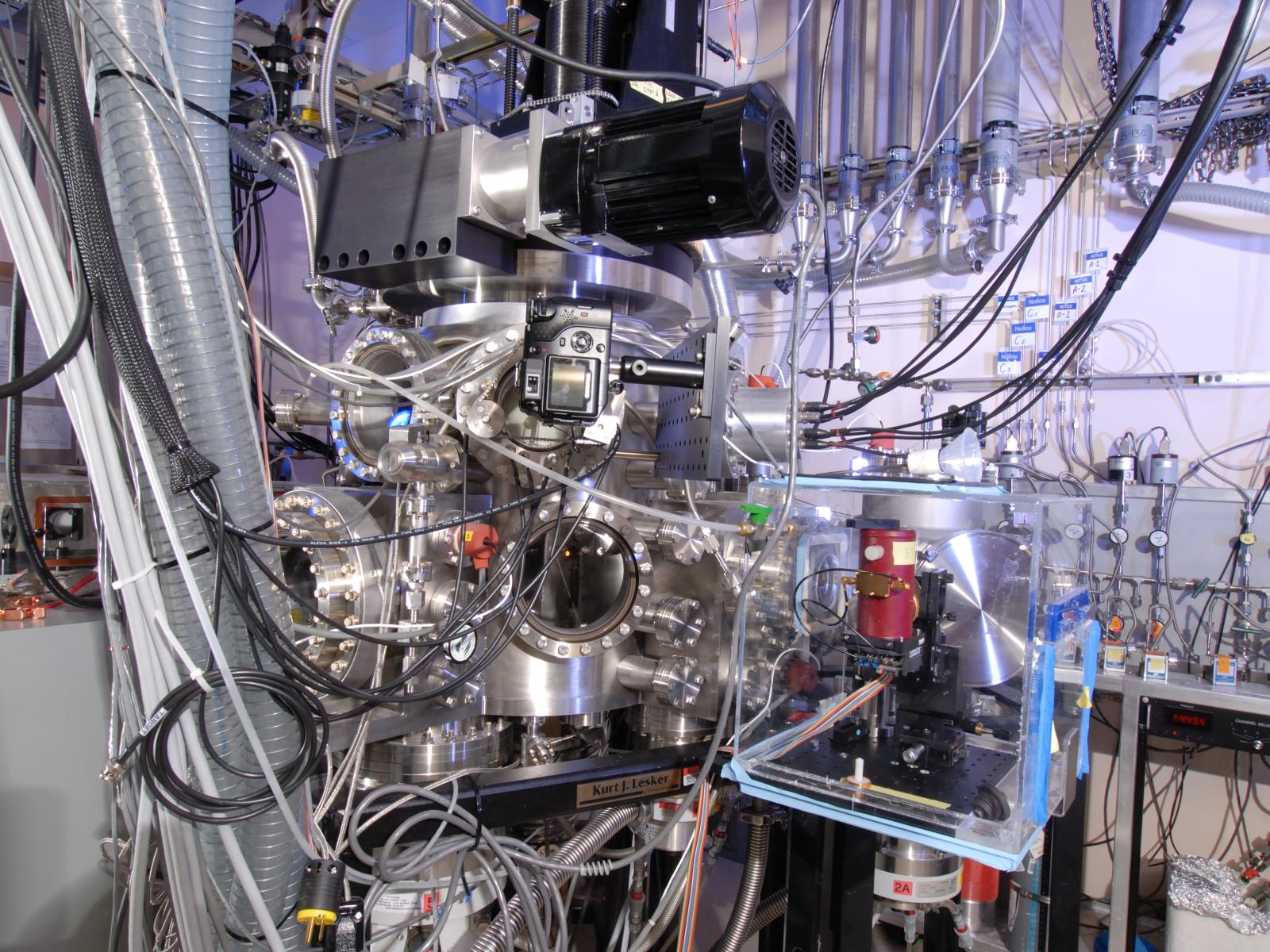The Existence of Deeply Supercooled Liquid Water
Isotopically layered water films and slow heating enable diffusion tracking

Tracking diffusion as amorphous solid water films warmed enabled researchers to identify supercooled water at extremely low temperatures.
(Image courtesy of Scott Smith | Pacific Northwest National Laboratory)
The Science
Water is at the center of processes ranging from precipitation to digestion. At extreme temperatures, water exhibits unusual behavior that scientists are still attempting to understand. To identify whether amorphous water behaves as a true supercooled liquid, researchers layered isotopically labeled amorphous solid water films. The isotopic labelling allowed them to track diffusion as the films were slowly warmed. They found that the intermixing between the layers was consistent with translational liquid-like water diffusion, which is behavior observed in normal supercooled liquid water.
The Impact
While water is ubiquitous and vital for life on Earth, a physical explanation for many of its anomalous properties remains a mystery. These anomalies increase and become more apparent as water is cooled below its melting point into the supercooled liquid regime. Exploring the structural and thermodynamic changes in supercooled water at these low temperatures will allow researchers to understand water’s unique behavior. This work provides convincing evidence for water’s glass transition temperature where, upon cooling, its behavior transitions from liquid-like to that of an amorphous solid.
Summary
Among water’s numerous unusual properties is the unresolved question of whether the behavior of amorphous water above its apparent glass transition at ∼136 K is that of a true supercooled liquid. The answer is important for determining if there is thermodynamic continuity between the melt of amorphous water and normal liquid water. Characterization of amorphous water films shows an increase in heat capacity of ∼2J/Kmol near 136 K, interpreted as being due to the glass transition. Some have argued that the reported glass transition is too weak to be from the unfreezing of translational and orientational (rotational) degrees of freedom and may be due to reorientation transitions only.
Researchers used the intermixing of isotopically layered amorphous water films at low temperatures and extremely slow heating rates to decouple the diffusion and crystallization processes. They were able to measure and analyze the intermixing of the amorphous layers without the interference of crystallization. The observed intermixing of isotopically layered nanoscale amorphous solid water film provides strong evidence for translational liquid-like water diffusion at temperatures near 136 K. These findings support the idea that the melt of amorphous water above its glass transition temperature is thermodynamically continuous with normal supercooled liquid water near the melting point.
Contact
Scott Smith, Pacific Northwest National Laboratory, Scott.Smith@pnnl.gov
Greg Kimmel, Pacific Northwest National Laboratory, Gregory.Kimmel@pnnl.gov
Funding
This work was supported by the Department of Energy, Office of Science, Basic Energy Sciences program, Division of Chemical Sciences, Geosciences, and Biosciences (FWP 16248).
Published: July 3, 2025
Smith, R. S., W. A. Thornley, G. A. Kimmel, and B. D. Kay. 2025. “Supercooled Liquid Water Diffusivity at Temperatures near the Glass Transition Temperature.” J Phys Chem Lett 16, 3198. [DOI: 10.1021/acs.jpclett.5c00245]